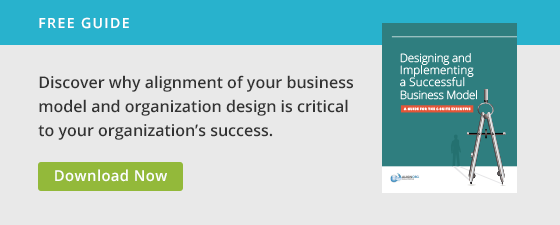Many companies utilize a PMO today. However, the role of a PMO during and after an organization design is often a little muddy. In a recent engagement with a client, the senior leader constantly referenced needing a PMO to solve all of the implementation challenges. Before a leader gets too far down the path of thinking that a PMO can solve all implementation hurdles, it is worth asking how organizational designers and leaders should interact with and utilize a PMO to support the implementation of a new organization design.
Before you can properly use a PMO, we must first understand its purpose. Although PMOs are often utilized in different ways, the “bread and butter” of a PMO is to provide a mechanism to organize and help coordinate work that no single manager or leader has the accountability to drive or oversee. In other words, the PMO is the “eye in the sky” on projects and details that cut across multiple functions.
To properly utilize a PMO, we must leverage their elevated, broader vantage position. Some of the activities that a PMO can help drive and facilitate through this unique position includes the following:
- Manage and coordinate multiple work streams
- Drive consistency across the entire project
- Create and maintain a project cadence
- Manage and ensure consistent report-outs
- Consolidate information for communication and executive review
- Provide integrating mechanisms to connect decisions across different areas
- Identify and track related issues or watch-outs across the entire project
- Help individuals from different areas connect to solve problems
- Ensure the right mix of individuals for project-wide meetings
- Create timing predictability
- Standardize project processes
Overall, the PMO adds a level of stabilization and predictability to a project. Because large projects can have multiple work streams that take on lives of their own, a PMO facilitates a more integrated way of sequencing the work, ensuring alignment across work streams, and providing visibility to the progress of each team. The PMO also helps a strategic design intent cascade down to lower levels of an organization, thus ensuring alignment not only across the organization but also from top to bottom.
Additionally, a PMO can help an organization transform their work from something messy or unpredictable into something more organized, visible, and predictable. To do this, the PMO must instill a discipline to manage work, timelines, and resource allocation. While admirable, this quest for order and structure sometimes flies in the face of the creative side of organization design efforts.
Organization design work is often iterative and flexible. At times, that flexibility can clash with the regularity and organizing prowess of PMOs. Although both are very much needed, it is important to realize that difference as you separate design work from project management work. If there is too much flexibility in the implementation, new designs have a hard time taking root, hitting milestones, and achieving measurable results. Likewise, without flexibility a design and/or strategy can leave options on the table that may have been the perfect direction the company needed.
I recall in one project I worked on a zealous project manager who put all of the appropriate structure in place from a project perspective. However, he got a bad rap because he didn’t understand the dynamic nature of strategic design work. He would walk into design sessions and without listening to the flow of the discussion he would stop the meeting and ask, “Why isn’t the group on time with the agenda?” This misses the mark when it comes to merging the discipline of PMOs with the art of strategic organization design.
The PMO stabilizes transformation efforts through standardization, establishes project cadence, and provides visibility and predictability to the long, complex transformation journey. If a leaders and organization design practitioners can leverage the strengths of a PMO, he/she can essentially free valuable time and bandwidth to ensure a successful implementation.


The tension between the need for flexibility in organizational design (and even design implementation) and the discipline of a PMO process are very clear in this piece.